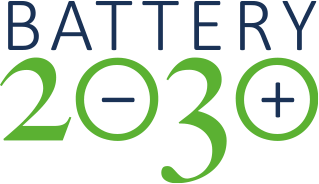Conclusion;
Hidden has successfully simplified and up-scaled TLC synthesis and made a library of all-in-one TILCs developed. Proof of concept of TILC self-healing validated at coin cell level (even though the ionic conductivity was still too low for real cells: ~70kOhm resistivity in the test cells). Furthermore a piezoelectric separator has been manufactured in pilot scale. The test cell results indicate an increase in lifetime. Cell level heating element was developed and tested with temperature sensors from Spartacus. Finally, modelling tools were created to estimate TILC phase transition temperatures, and promising molecules with low phase transition temperature identified.
Introduction text in the beginning of project;
The HIDDEN project is developing self-healing processes to enhance the lifetime and to increase the energy density of Li-metal batteries by 50 % above the level achievable with current Li-ion batteries. The HIDDEN consortium is developing materials and associated processes for functional battery layers as scalable, industry- compatible manufacturing technologies enabling sustainable energy storage technology with longer battery lifetime and higher energy storage capacity for more efficient utilisation of sustainable, carbon- free energy production technologies. HIDDEN will develop novel self-healing thermotropic liquid crystalline electrolytes and piezoelectric separator technologies, investigate the use of protective additives with both these technologies, apply multi- scale modelling in electrolyte design, and use analysis algorithms to monitor dendrite growth. Technologies will be up- scaled from laboratory to industrial manufacturing processes, tested, and finally demonstrated by assembling battery cells with battery layers and the temperature control system. The project brings together a strong interdisciplinary consortium of seven partners, balanced between industry and research, with state-of-the-art backgrounds in battery chemistry and physics, materials modelling and analysis, up-scaling novel technologies by printing and coating, and the industrial assemby of battery cells. This is complemented by an external advisory board representing key industry end-users.
VTT Technical Research Centre of Finland, Finland
Project coordinator: Dr. Marja Vilkman
Email: marja.vilkman@vtt.fi


